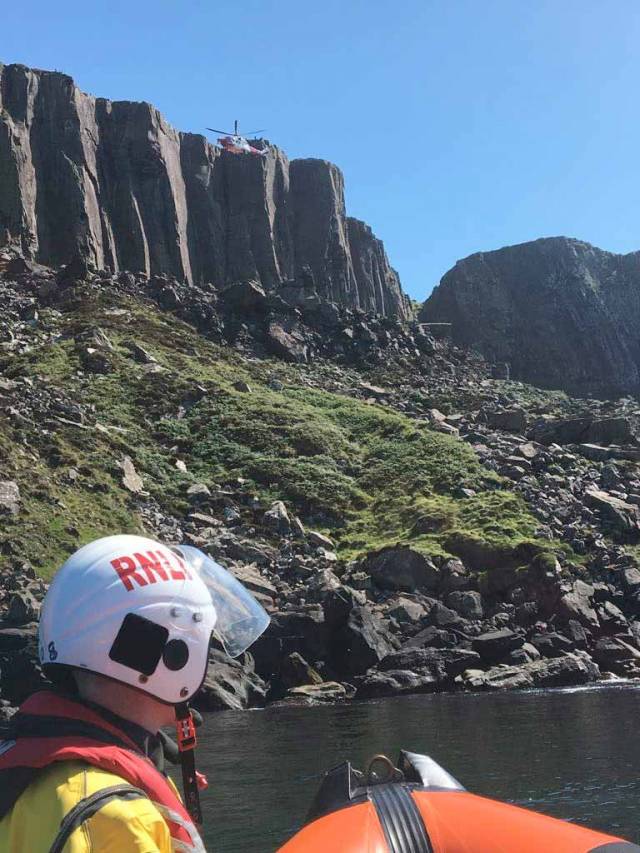#RNLI - Red Bay RNLI rescued a woman who fell while climbing Fair Head in Co Antrim yesterday afternoon (Wednesday 12 July).
The volunteer crew launched their inshore lifeboat around 2pm following a request from Belfast Coastguard to go to the scene north-east of Ballycastle.
The shore-based Ballycastle Coastguard rescue team also made their way to the location, while the coastguard helicopter from Prestwick was additionally tasked.
Weather conditions at the time were described as good, with sunny weather and calm seas.
Once on scene, the lifeboat transferred two of its crew members who went ashore to assess the casualty, who had sustained a leg injury.
The crew then began to administer casualty care and worked to reassure the injured woman until the arrival of a paramedic from the rescue helicopter.
The woman was airlifted to Belfast City Airport and transferred to the Royal Victoria Hospital for treatment.
Speaking following the callout, Red Bay RNLI volunteer lifeboat press officer Paddy McLaughlin said: “We would like to wish the woman a speedy recovery from her injury and thank our colleagues in the coastguard who we worked with to bring her to safety.
“As the summer continues, we want to encourage the public to enjoy everything the coast has to offer but we want them to come home safely.
“Fair Head is a popular spot for climbers but it is remotely located and can be challenging so walkers and hikers alike need to go prepared with the right clothing, equipment and training and take extreme care.
“We would remind anyone planning a trip to or near the sea to respect the water and be wary of all edges around the sea. Always let someone know where you are going and when you expect to be back.
“Always carry a means of communication and should you get into difficulty use it to call 999 or 112 and ask for the coastguard.”
































































